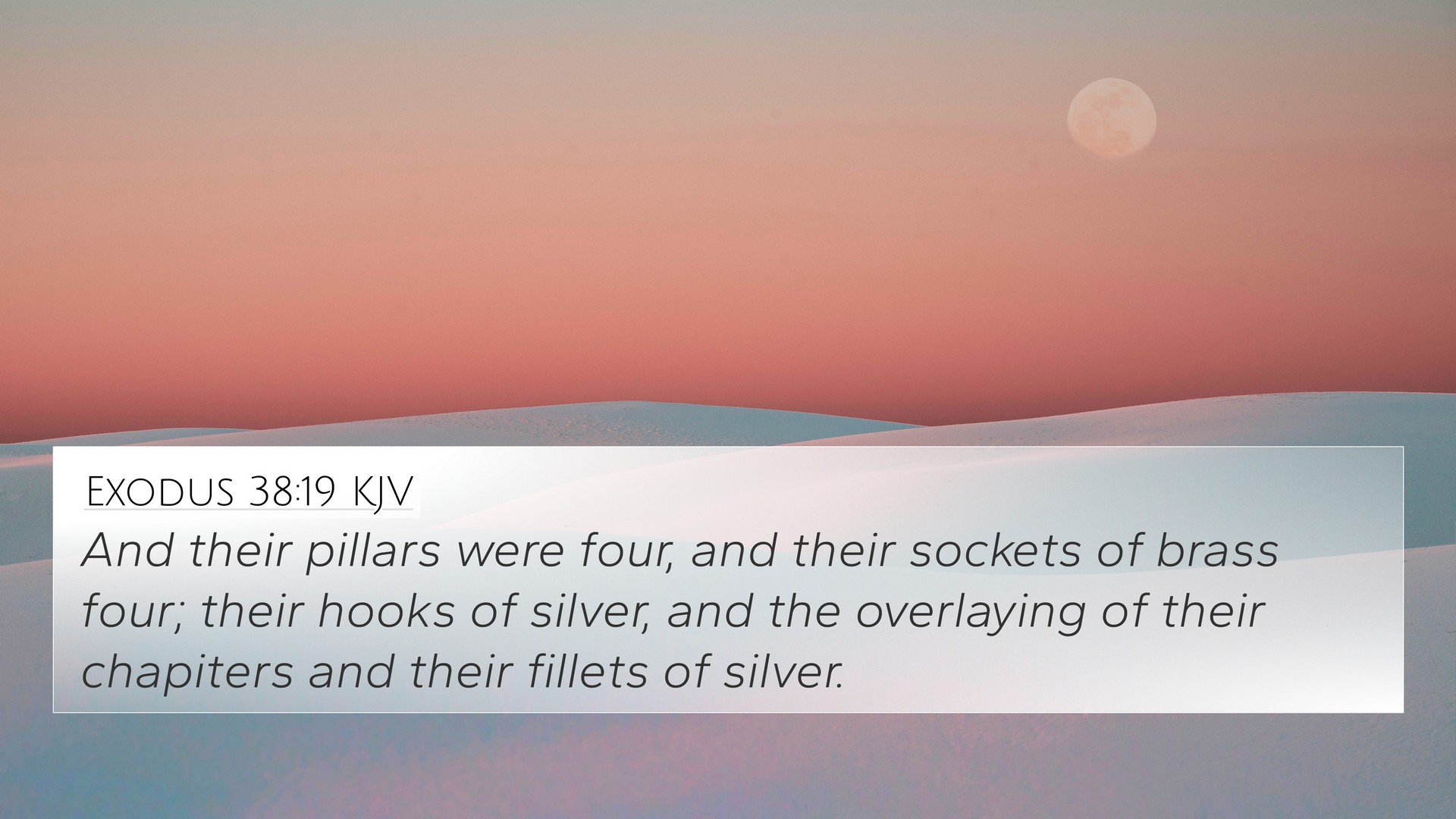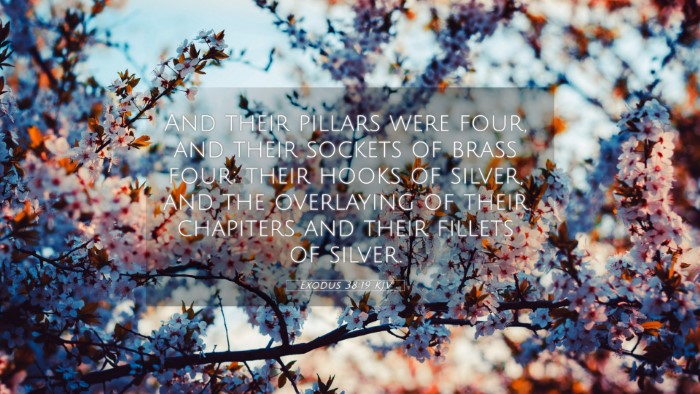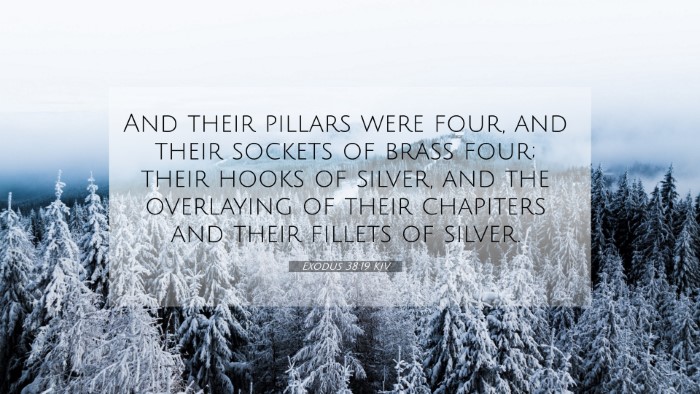Understanding Exodus 38:19
This commentary explores Exodus 38:19, which speaks of the curtains to the court made of fine twined linen. Delving into its meaning reveals insights into God's instructions for worship, the significance of materials, and the overall atmosphere of holiness that surrounded the tabernacle.
Context of Exodus 38:19
The construction of the tabernacle, as described in the Book of Exodus, highlights the meticulous and detailed nature of God’s instructions to Moses. Each element of the tabernacle is a precursor to understanding the worship and presence of God among His people.
Meaning and Significance
According to Matthew Henry, the fine twined linen represents purity and the holiness required in approaching God. This detail reflects the overarching theme of separation between the holy and the unholy.
Albert Barnes notes that the curtains served a practical purpose, shielding the sacred space from the outside world, symbolizing the protective barriers that God establishes for His worship. The materials used depict not just aesthetic value but convey spiritual meanings, illustrating God’s glory and majesty.
Furthermore, Adam Clarke emphasizes the continuity of God's covenant relationship with His people through these prescribed elements of worship. The specific instructions provided in Exodus serve as a reminder of the covenant established at Sinai, reinforcing their identity as God's chosen people.
Thematic Connections
Exodus 38:19 embodies themes that resonate throughout the Scriptures. The tabernacle's design and elements echo later teachings in the New Testament, where the body of believers is depicted as the temple of the Holy Spirit (1 Corinthians 6:19). This invites a comparative Bible verse analysis.
Cross-References
- Exodus 26:1 - Details about the curtains of the tabernacle.
- 1 Peter 2:9 - The believers as a royal priesthood, emphasizing holiness.
- Hebrews 9:2 - Description of the tabernacle setup in relation to the New Covenant.
- Matthew 27:51 - The tearing of the temple veil symbolizing access to God.
- 2 Chronicles 3:14 - Reference to the dimensions and materials of the temple curtains.
- Revelation 21:22 - The absence of a temple in the New Jerusalem, focusing on God's immediate presence.
- Galatians 4:24 - Allegorical reference to the two covenants illustrated through the tabernacle.
- Exodus 40:33 - The completion and the setting up of the tabernacle.
- Isaiah 54:2 - A metaphorical image of expanding boundaries, reflecting growth in holiness.
- 1 Corinthians 3:16 - Encouragement of believers to recognize their role as God’s temple.
Applying the Insights
As believers today we see these detailed instructions as reminders of our responsibility to maintain holiness in our lives and spaces. Just as the Israelites were commanded to create a space for God's presence, we are called to invite and honor that presence in our own lives.
Tools for Further Study
To grasp these connections and deepen your understanding of such passages, consider utilizing:
- Bible concordance: To find cross-reference scriptures related to Exodus 38:19.
- Bible cross-reference guide: A tool for tracing themes and connections throughout the Scriptures.
- Cross-reference Bible study methods: Various formats including thematic studies or chapter analysis.
Conclusion
Exodus 38:19 encapsulates the essence of God's instructions for worship, layered with deep meaning that resonates through both Old and New Testaments. Engaging with this and related verses through cross-referencing enriches our understanding and reinforces our faith.


